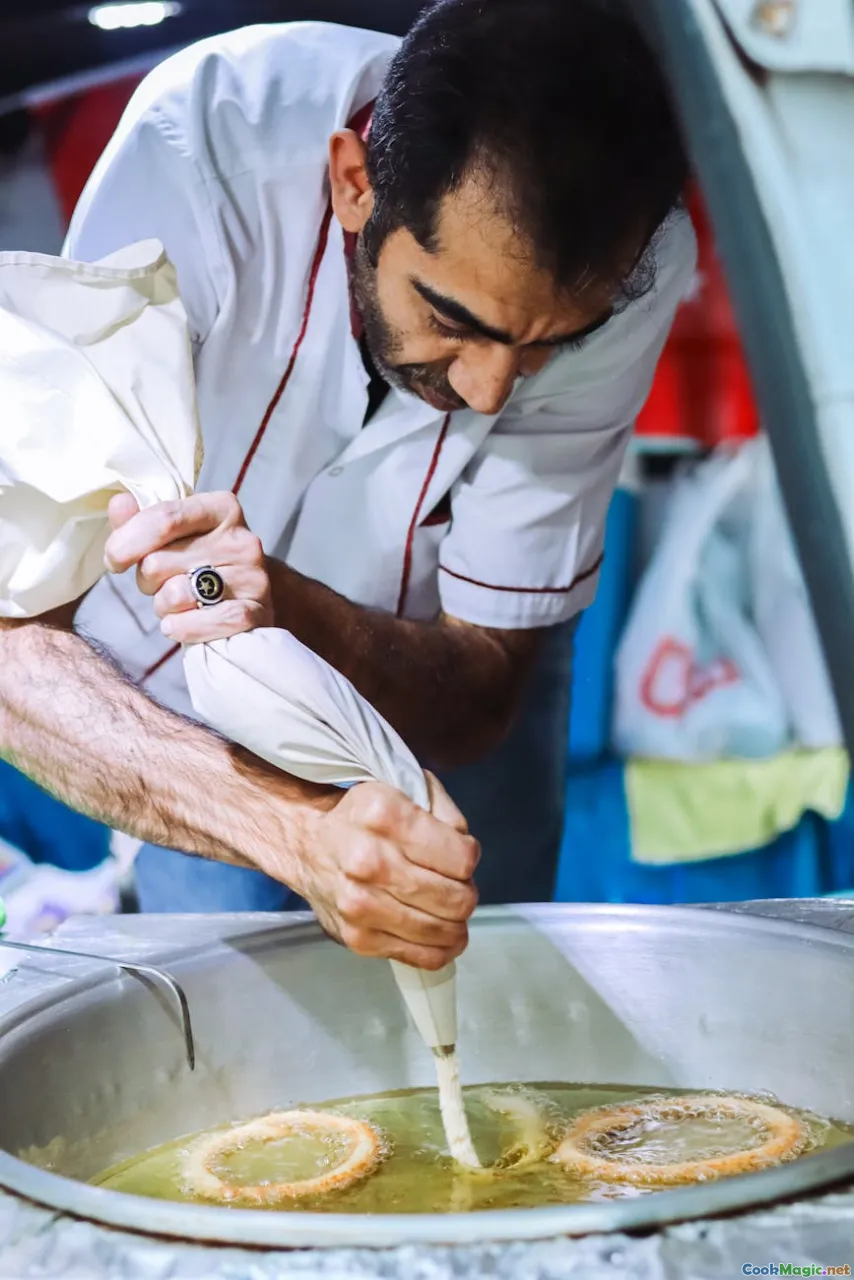The Art of Albanian Dessert Making
7 min read Discover the rich history, vibrant flavors, and intricate techniques behind Albanian desserts, a sweet journey into Balkan culinary artistry. April 19, 2025 15:55
The Art of Albanian Dessert Making
Imagine walking through the narrow, cobbled streets of ancient Albanian towns, where the aroma of honey, freshly baked pastries, and fragrant nuts wafts through the air. These scents are more than just smells; they are stories—centuries of tradition, familial bonds, and cultural identity wrapped in layers of sweet delight. Albanian desserts are not merely treats; they are a testament to the country's rich history, diverse influences, and communal spirit.
A Tapestry of History and Culture
Albanian cuisine, like its landscape—rugged mountains, lush valleys, and shimmering coasts—is deeply rooted in centuries of history. The desserts of Albania reflect a fusion of Ottoman, Mediterranean, and Balkan influences, each adding its unique touch to sweet creations. During the Ottoman rule, the introduction of ingredients like pistachios, rosewater, and phyllo dough revolutionized Albanian sweets, integrating them into a shared regional culinary heritage.
In Albanian villages and towns, desserts are more than food—they are symbols of hospitality, celebration, and tradition. Special occasions such as weddings, religious festivals, and family gatherings are marked with an array of colorful, aromatic sweets, each with its own story and significance.
The Heart of Albanian Dessert Making: Ingredients and Techniques
Core Ingredients
Albanian desserts are characterized by their use of natural, local ingredients:
- Nuts: walnuts, almonds, pistachios, and hazelnuts are staples, often ground into pastes or used as toppings.
- Honey and Syrups: local honey is prized for its richness, while sugar syrups are essential for many recipes.
- Fruits: dried figs, apricots, and cherries add both flavor and texture.
- Dairy: yogurt, milk, and cheese sometimes feature in traditional recipes.
- Spices and Flavorings: rosewater, orange blossom water, cinnamon, and cloves bring aromatic depth.
Techniques
The craftsmanship behind Albanian desserts involves meticulous techniques:
- Dough Preparation: filo (phyllo) dough is often handmade or sourced locally, rolled thin, and layered with precision.
- Sweetening and Syruping: many desserts are soaked in fragrant syrups, allowing the flavors to meld deeply.
- Nut Pastes: grinding nuts into smooth pastes is a fundamental step, used in fillings and toppings.
- Baking and Frying: desserts are baked to golden perfection or fried until crispy, then soaked or coated with syrup.
Iconic Albanian Sweets
1. Turshi i Sheqerit (Sugar Pickles)
A uniquely Albanian sweet, these are candied fruits and vegetables preserved in thick sugar syrup, offering a delightful balance of sweetness and tang.
2. Qofte me Mjaltë (Honey Balls)
Soft, chewy balls made from honey, walnuts, and breadcrumbs, often coated in sesame seeds. They are a festive favorite, embodying the warmth of Albanian hospitality.
3. Baklava Albanian Style
While baklava is widespread across the Ottoman-influenced regions, Albanian baklava distinguishes itself with local variations—layers of flaky filo filled with ground nuts, drizzled with honey, and flavored with rosewater.
4. Kadaif (Kadaifë)
Thin shredded pastry soaked in syrup, layered with nuts, and baked to crispy perfection. Its delicate texture and sweet aroma make it a staple at celebrations.
5. Raki i Sheqerit (Sugar Raki)
A sweet, syrupy liqueur infused with spices and citrus, often served alongside desserts, enhancing the tasting experience.
Personal Reflections and Culinary Insights
Growing up in Albania, I remember the anticipation of family gatherings where the kitchen was filled with the aroma of baking and simmering syrups. My grandmother’s hands, deft and experienced, would fold filo with care, sprinkle nuts with love, and pour syrup with a gentle touch. For her, each dessert was a labor of love, a way to connect generations.
One of my fondest memories is of the Tavë Dheu, a traditional Albanian baked pudding, infused with orange zest and topped with crushed nuts, served warm and drizzled with honey. The texture was velvety, with a hint of citrus, offering comfort and celebration in every bite.
The Social and Cultural Significance
Albanian desserts serve as more than just sweet endings to meals—they are expressions of identity and community. Sharing desserts is a gesture of hospitality; offering a piece of Raki i Sheqeritor a slice ofBaklava signifies respect and warmth.
During religious festivals like EidorChristmas, families craft special sweets, often passing recipes through generations, preserving culinary heritage.
Modern Takes and Preservation of Tradition
Today, talented Albanian chefs and home cooks are experimenting with traditional recipes, infusing them with contemporary flavors—such as pistachio and saffron custards or vegan-friendly nut pastes. Yet, the essence remains rooted in authenticity.
Efforts are underway to preserve traditional techniques, with culinary workshops and cultural festivals celebrating Albanian sweets, ensuring that these delectable art forms continue to enchant future generations.
Conclusion: A Sweet Journey into Albanian Soul
Albanian desserts are more than just confections; they are a reflection of resilience, artistry, and the warm spirit of its people. Each bite tells a story—of history, family, and culture—that has been lovingly crafted over centuries.
So, next time you indulge in a piece of Kadaifor savor the fragrant notes of honey-ladenQofte, remember—you are tasting the very soul of Albania, one sweet moment at a time. Dive into these traditions, embrace the sensory feast, and let your culinary curiosity guide you through the artful world of Albanian dessert making.









